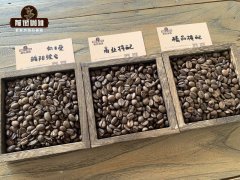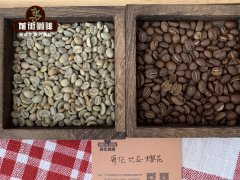21 amazing Coffee fact Coffee beans are Seeds drinking Coffee makes people live longer
When you hold a cup of sweet boutique coffee with citrus flavor in your hand, have you ever thought about some things about coffee? there are all those charming background stories behind the coffee. The front street coffee will take you in to take a look at the other side of the coffee and fill your coffee with thick stories.
This drink dates back to 800 AD.
Legend has it that 9th century shepherds noticed the effect of caffeine on their goats, which seemed to "dance" after eating the fruits of coffee plants. a local monk made a drink out of this product and found it kept him awake all night, so the first coffee was born.
Coffee beans are technically seeds.
They are the kernels of cherry-shaped berries found in flowering shrubs, but we call them "legumes" because they are similar to beans.
There are two main varieties: Arabica and Robusta.
Growers mainly grow Arabica species. Although not very popular, Robusta tastes a little bitter and contains more caffeine.
Brazil is the country that grows the most coffee in the world.
Today, Brazil accounts for about 1/3 of the world's coffee supply, about twice as much as Vietnam, according to the International Coffee Organization.

Only two states in the United States produce coffee.
Kona coffee is a gift from the United States to the coffee industry. Since coffee traditionally grows best in climates along the equator, the weather in Hawaii is best for harvesting coffee beans. California recently joined the coffee game, and dozens of farms now produce expensive, high-quality bags.
Espresso means "press out" in Italian.
This refers to the way espresso is made-forcing boiling water through pressed coffee grounds. Although each espresso contains more caffeine than coffee, it takes three cups of coffee to equal the caffeine of a cup of regular coffee.
The world's most expensive coffee sells for more than $600 a pound.
One of the most coveted varieties of comes from the droppings of masked palm civet, an Asian palm. This cat-like creature eats fruits, including coffee cherries, but cannot digest coffee beans. The expelled seeds produce a smooth, less acidic coffee called kopi luwak, which is Kopi Luwak, but this mode of production has been criticized by animal welfare activists.
Many people tried to ban coffee.
As early as 1511, Mecca's leaders thought it stimulated radical thinking and banned the drink. Some 16th century Italian clergy also tried to ban coffee because they thought it was "evil". However, Pope Clement VII liked coffee so much that he lifted the ban and baptized it in 1600.
Even in the 18th century, the Swedish government outlawed coffee and coffee utensils (including cups and plates) because it was associated with rebellion.
You can drink too much coffee.
Don't worry, you need to drink about 30 cups of caffeine in a short time to get close to the lethal dose of caffeine.
Finland is the hometown of the biggest coffee lovers.
Finns drink an average of 27.5 pounds of coffee a year, according to the International Coffee Organization. By comparison, each American weighs a pitiful 11 pounds.
Coffee drinkers tend to live longer.
Studies have shown that moderate consumption (about 3 to 4 cups a day) is associated with longer lifespan and a lower risk of cardiovascular disease, type 2 diabetes and Parkinson's disease, according to Harvard Health Press.
The 9-foot-tall cup is filled with the largest cup of coffee ever.
The 3487 gallon service won the Guinness Book of World Records in 2012.
The Boston tea event promoted the popularity of coffee in the United States.
On the eve of the Revolutionary War, PBS revealed that drinking Java instead of tea became patriotic. The civil war also made the drink more common because it helped to invigorate weary troops.
Decaffeinated doesn't mean it doesn't contain caffeine.
The Mayo Clinic points out that an 8-ounce cup of decaffeinated coffee actually contains 2 to 12 milligrams of caffeine. By contrast, a regular cup of coffee provides 95 to 200 milligrams of caffeine, while a can of cola contains about 23 to 35 milligrams of caffeine.
The word "coffee" comes from "wine" in Arabic.
Qahwah later became the Turkish kahveh, then the Dutch koffie, and this is where we got the English word coffee.
Starbucks opens an average of two stores a day.
Forty-seven years after opening your first store in Seattle, you can now order lattes in more than 29000 locations around the world.
A cup of black coffee has only one calorie.
Adding sweeteners, cream and other mixtures can quickly increase the total amount. A cup of Venti Java Chip Frappuccino from Starbucks contains 88 grams of sugar and 600 calories-more than a McDonald's Big Mac!
According to reports, Teddy Roosevelt (Teddy Roosevelt) coined the slogan Maxwell House.
According to the Smithsonian website, the 26th president of our country loved coffee so much that one of his sons described his custom cup as "more like a bathtub". In 1907, during a visit to Andrew Jackson's former home, the commander-in-chief jokingly called a cup of Maxwell House joe "delicious to the last drop", a slogan still used today.
Coffee can be ordered in 25000 different ways at Dunkin'.
The recently renamed doughnut chain calculated its customizable java drinks. It sells 2 billion cups worldwide each year, enough for customers to choose each option 80000 times.
Coffee grounds can beautify your skin.
Save the leftover beans for DIY frosting. "Coffee grounds are physical exfoliators that remove dead skin cells, making the skin feel smooth and look brighter," says Danusia Wnek, a chemist at Good Housekeeping Beauty Lab. "and caffeine is thought to improve blood circulation in the skin, but there is not enough clinical data to prove its use in topical products."
Important Notice :
前街咖啡 FrontStreet Coffee has moved to new addredd:
FrontStreet Coffee Address: 315,Donghua East Road,GuangZhou
Tel:020 38364473
- Prev

What's the use of robusta coffee? Why are Robusta beans notorious?
Have you ever wondered what robusta coffee is for? You keep hearing about it, but no one really talks about it in detail. If people are so disappointed with its taste, why is it important and why use it? It turns out that Robusta has many uses and was the savior of the coffee industry more than a century ago.
- Next

Colombian boutique coffee culture what are the factors related to the mild richness of Colombian coffee
Colombian coffee is famous for its quality and delicacy; in fact, like several other countries, Colombian coffee is widely regarded as one of the best coffee in the world. But what makes coffee in one country better than that in another? Isn't it all coffee? The simple answer is to work with Front Street Coffee to understand what makes Colombian boutique coffee so beautiful.
Related
- What brand of black coffee is the most authentic and delicious? what are the characteristics of the flavor of the authentic Rose Summer Black Coffee?
- Introduction to the principle and characteristics of the correct use of mocha pot A detailed course of mocha pot brewing coffee is described in five steps.
- Which is better, decaf or regular coffee? how is decaf made?
- How much is a bag of four cat coffee?
- How about four Cat Coffee or Nestle Coffee? why is it a cheap scam?
- Which is better, Yunnan four Cats Coffee or Nestle Coffee? How about cat coffee? is it a fake scam? why is it so cheap?
- How about Cat Coffee? what grade is a hoax? which instant coffee tastes better, four Cat Coffee, Nestle Coffee or G7 coffee?
- Process flow chart of coffee making-Starbucks coffee making process what coffee tastes good at Starbucks
- The top ten best coffee beans in the world Rose summer coffee or Tanzanian coffee tastes good
- Yunnan four cat coffee is good to drink?_four cat coffee is a big brand? four cat blue mountain coffee is fake?

